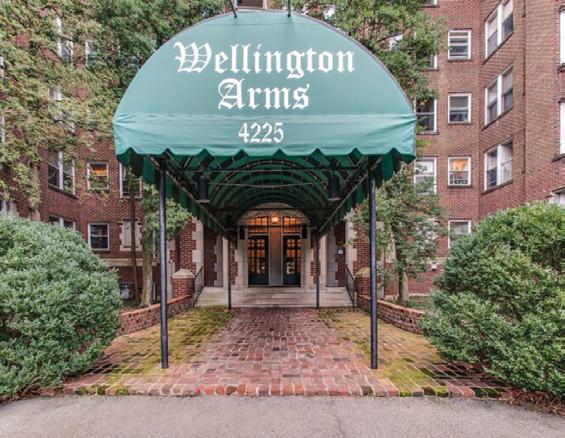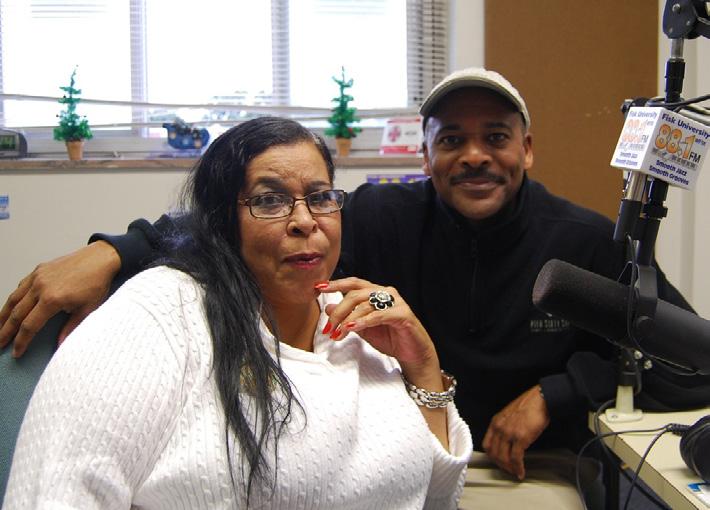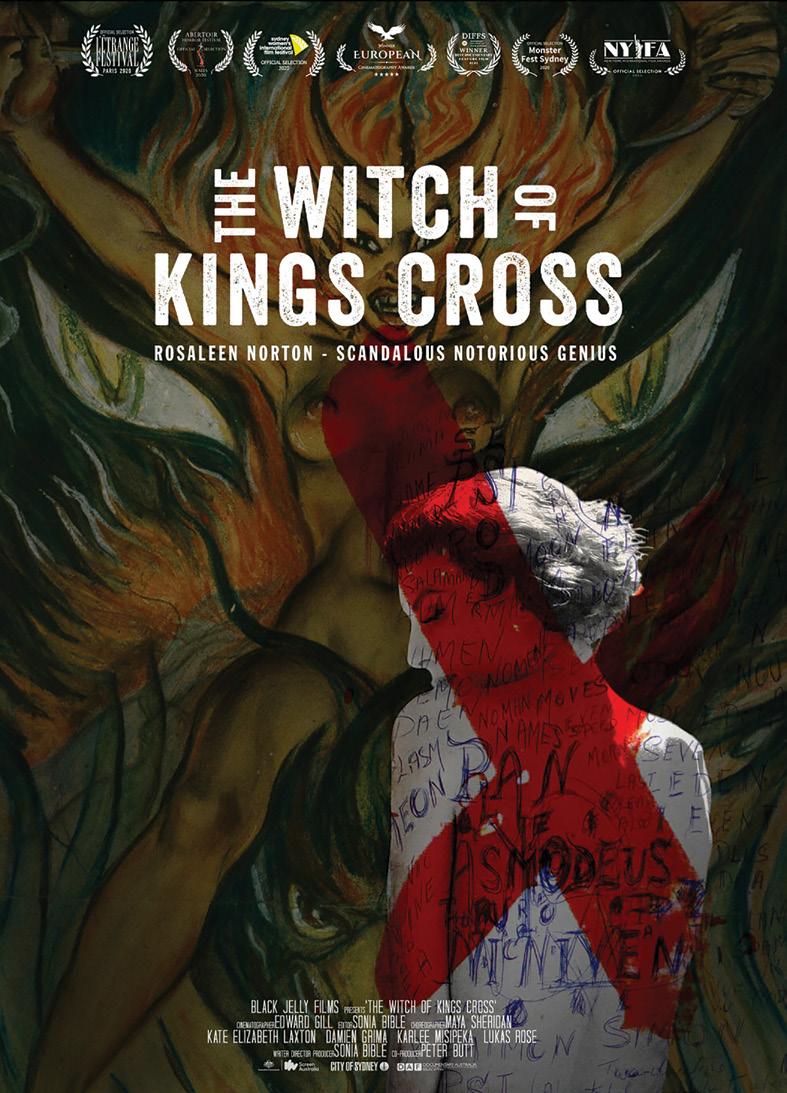
12 minute read
The Road to Decriminalizing Homelessness in Nashville
Nashville’s criminal justice system turns inward for alternatives to traditional policing
BY HANNAH HERNER
Joseph Bryant, a Black man experiencing homelessness, was the first person in Nashville arrested for refusing to wear a mask. Hours after his arrest in August 2020, Mayor John Cooper announced that it would be then-police chief Steve Anderson’s last day on the job, ahead of his scheduled retirement in October.
Two days later, the second charge for “County Board of Health Violation” went to a man experiencing homelessness, too.
There was only one person charged with “escape from quarantine” in 2020, a man who jumped the fence at the Nashville Fairgrounds overflow shelter.
An investigation by The Contributor confirmed that there are charges that disproportionately affect our neighbors on the streets, even during a pandemic, when charges were down overall. Protests against police brutality in 2020 challenged cities around the country to rethink the purpose of the police force. The city, police, courts, Sheriff’s office and state organizations have switched up their approaches in the last two years.
How will these changes serve people experiencing homelessness?
In late November, interim police Chief John Drake, a Nashville native who has been with the department for 32 years, officially became Nashville’s second Black chief of police. Drake has stated that he does not believe that charges such as public intoxication, obstruction of passageway, public indecency and criminal trespassing necessarily affect people experiencing homelessness disproportionately.
“It’s not just the displaced citizens, but we actually have people that come here and visit that can be charged with trespassing,” he told The Contributor.
The Contributor looked at data on the four charges mentioned to Chief Drake to note how many people experiencing homelessness were charged compared to how many listed an out-of-state address. Those who listed an area shelter as their address were counted as homeless for this story.
In 2020, 56 percent of all charges for obstructing a passageway went to people experiencing homelessness. None went to tourists.
Eleven homeless people were charged with public indecency, while no out-ofstaters were charged.
The number of people experiencing homelessness charged with public intoxication nearly doubled that of visitors — 390 to 198.
Forty percent of criminal trespassing charges went to people experiencing homelessness. That’s 391 charges, compared to 35 charges from out-of-state visitors.
The total number of arrests for criminal trespassing is down significantly from last year. From January to October 2019, there were 724 arrests for trespassing from people experiencing homelessness. In the same time span of 2020, there were 364 arrests on this charge. MNPD says that’s due to COVID-19, during which officers have been encouraged to issue citations rather than arrests.
Trespassing charges were also brought against Black people experiencing homelessness more than white people who are homeless: 213 to 174. That’s 55 percent of criminal trespassing charges brought against those who are Black and homeless compared to 45 percent of the homeless population being black, and 28 percent of Nashville’s general population being Black.
Since he became chief, Drake has assigned a quality of life team, whose goal is to make friends with those experiencing homelessness and work with area homeless service providers such as the Salvation Army and Metro Homeless Impact Division.
“There’s a lot of factors to people who are displaced,” Drake says. “There’s mental health, there’s drug addiction and there’s other issues. I feel the best approach is to connect those to services where we can. There still are situations where we have to make an arrest if a crime has been committed.”
New alternatives introduced during the pandemic
The Davidson County Sheriff’s Office introduced an alternative to jail in 2020 called the Behavioral Care Center and Nashville also launched the Homeless Court this year, which is a separate docket just for those experiencing homelessness.
Sheriff Daron Hall says the jail is 80 percent men and 20 percent women (they do not have a category for those who are nonbinary), and about 30 percent are diagnosed mentally ill. Many are there awaiting court dates after failing to appear in court or pay fines owed, things that Hall admits are especially challenging for those experiencing homelessness and/or a mental illness.
“The number one reason a mentally ill person was coming into the jail system in Nashville is because they failed to do something we shouldn’t have asked them to do anyway,” Hall says.
From November through January, a total of 3,672 people were sent to jail in Davidson County. The BCC served 50 total since it started accepting patients during its pilot phase in late October. Karla West, spokesperson for the sheriff’s office says this is because COVID-19 lowered the number of people being brought to jail total, therefore affecting the number eligible for the Behavioral Care Center.
The Behavioral Care Center staff come from the sheriff’s office, but did not previously serve as police officers. They spent two weeks training in behavioral health, mental health, trauma-based care, and de-escalation. They don’t use the term “inmate” or “officer,” and will be using scrubs instead of traditional uniforms.
“It’s not a uniform with a badge on it and an in-charge persona. This is more of a supportive team member trying to help you get your life in order,” Hall says. “Everything looks different, feels different, because we want to treat you and decriminalize the illness.”
People can stay at the care center for up to 30 days. Under contract, the person cannot be released to the streets, Hall says. They have to be released into the hands of someone else, with two weeks of any needed medication in hand.
Nashville’s Homeless Court was held at area shelter provider Room In The Inn for the first time in August. This once-monthly docket is filled with people who were charged with misdemeanors like those investigated above, and also hosts area service providers in an effort to get those on the docket connected to needed services. So far it’s helped between two and eight people each month. At the helm is Judge Lynda Jones.
“Many people who experience homelessness do not use drugs and do not have addictions when they are thrown into the streets,” she told The Contributor. “We are preventing some people from going down that dark path by connecting them to much needed resources early.”
The limits to treatments through criminal justice
Alternatives like the Behavioral Care Center and homeless courts have their limits, says public defender Emily Herbert. She says her clients often choose a plea deal before getting to utilize either one. They don’t know exactly how long treatment would take or what it would entail, so they choose the more transparent route of pleading guilty.
Herbert specializes in helping clients navigate services like these. She admits it can be very difficult to offer an alternative narrative for her clients who are homeless. They did, in fact, break that law. But that doesn’t mean the way that the law being enforced is fair.
“They exist in a world that has worked pretty hard, I think, to make it practically illegal to be homeless,” Herbert says. “That effort is to make these individuals invisible, quite frankly.”
One of the biggest struggles with her homeless clients is staying in contact with them, especially to remind them of important dates. If they fail to appear in court, it’s harder for them to get a pretrial hearing. When they don’t get that, they’re under the “really powerful coercive pressure” to plead guilty just to get out of jail, she says. People don’t know exactly when they’ll be released if they do choose to enroll in a treatment plan.
“They just want to be done with it. They’ve been screwed over time and time again for just existing,” Herbert says. “They may not want to embrace this wonderful help you came up with.”
Still, she says alternatives like the Behavioral Care Center and homeless court can be helpful, as some thrive under the oversight and structure that comes with it. As far as the Behavioral Care Center, she’s hopeful. So far, clients gave positive reviews. However, she believes the money is better spent in long-term supportive housing for people with behavioral health issues.
“There’s a fundamental problem in using the legal system as a method by which we are going to ‘help people’ in our society. We don’t agree with that in the public defender’s office,” Herbert says. “When we’re choosing to fund the criminal legal system, we are absolutely criminalizing poverty and homelessness and behavioral health issues.”
Growing alternatives in Nashville
At the Crisis Treatment Center, which opened in late 2019 at the Mental Health Co-Op, about 60 percent of the population served is homeless. This is for obvious reasons, says Jacob Henry, supervisor of emergency psychiatric services at Mental Health Co-Op — they have a lot of stressors.
“One of the main reasons for building the facility was to deter someone who is homeless from just getting arrested,” he says.
Those in need of acute psychiatric services can walk up, or ride the bus over, and some referrals come from emergency rooms. Police can bring someone in to the center, or Nashville Outreach Team on Encampments, which was meant to serve as first responders alongside or instead of police.
Metro Homeless Impact Division said it did not keep track of how often this team responded to crises with or without the police. MHID does still have two outreach specialists, but does not have N.O.T.E. anymore.
Judith Tackett, director of the Metro Homeless Impact Division says the organization has shifted its efforts away from street outreach, which is down by about 40 percent. MHID has shifted toward case management for those staying at Metro’s COVID-19 overflow shelter at The Fairgrounds Nashville.
She says police precincts regularly reach out to the Homeless Impact Division when they receive complaints about homeless encampments, and when outreach workers respond, the police do not go with them.
“We approach people from a service point of view to checking whether they are
call and have the mobile crisis response unit come to pick the person up. Many times, police call ahead of time to consult with the team at Mental Health Co-Op., Henry says. At the time of press, the Co-Op did not have data available for how often referrals come from police.
The Crisis Treatment Center itself is an observation unit, where people will spend less than 24 hours. At most, a person could stay at the center for about a week — three days at the adjacent Crisis Stabilization Unit, and three more at the Intensive Intervention Center, also known as “respite.”
Henry says the goal is to stabilize them to the point that they’re not an immediate threat and get them back to outpatient care as soon as possible. Studies show that that’s the best course of action, because their everyday lives aren’t centered around a facility.
“A person’s everyday life is not built around staying in a secluded facility,” he says. “The best treatment is to give them coping skills so that they’re able to manage their everyday life.”
A team disbanded
At one time, Metro Homeless Impact Division had a team of people called the linked to services, and if they are not, we work on making that service connection,” Tackett wrote in an email. “In addition, we also make people aware about the nature of the complaint that was made and discuss how we can help remedy a situation. Our ultimate goal is to link people to services that lead to permanent housing.”
What could be — Oregon’s leading example
CAHOOTS, (Crisis Assistance Helping Out On the Streets) an outreach team more than 30 years running in Eugene, Ore., has been getting a lot of calls lately, inquiring about how to make an alternative to policing like theirs work in other cities. When you call 911 in Eugene, the call can be routed to traditional first responders like the police or fire department, or to CAHOOTS, a casually dressed team of mental health professionals and medics specializing in serving those experiencing homelessness, mental health struggles, or both.
CAHOOTS members also carry police radios, so they can intercept calls for known homeless neighbors, or call for backup other times. Sometimes the police will go first if there’s a weapon believed to be on the scene, and once things are secured, CAHOOTS can go in and help. In his four years as a medic on the team, Daniel Felts says he’s only had to call police in for backup four times.
“When social workers are embedded with law enforcement, I’m sure there are some absolutely phenomenal people who do incredible work. Same goes for law enforcement,” Felts says. “I know officers and crisis negotiators that are extremely humanistic and skillful, and arrive at what is the absolute best is for everyone. That doesn’t change the fact that there are broad historical traumas that get triggered when a police officer is responding, or when you’re showing up with a police officer.”
He says the biggest challenge is the call log piling up with people calling for wellness checks on people they see sleeping, or even just sitting outside. A lot of times the person in question isn’t even there anymore when CAHOOTS rolls up. As they’re dealing with more acute crises, welfare checks often get pushed hours down the line. To remedy this backlog, Felts said he would like to see community members more willing to ask their neighbors on the streets if they need something, or to check from a distance if their chest is still rising.
“Every time that one of those calls comes in, and the member of the public is concerned about the welfare of someone else, there has to be a response,” he says. “Quite often, we get inflicted on people. And sometimes it’s the same person multiple times in a shift, and that gets really taxing for them and for us, because we have already checked in, we know that they don’t want or need anything from us, they are safe with themselves.”
Felts says the key to making a program like this work is buy-in from the community, and especially the emergency dispatchers.
The future in Nashville
Nashville’s Chief Drake said he’s looking for funding for a crisis intervention team composed of police officers in plain clothes, which would be different from a model like CAHOOTS.
“Historically, when a person is in crisis, the uniform tends to escalate the situation,” Drake says. “So if we can have an officer in plain clothes co-responding with a mental health expert … You want to be able to de-escalate, to talk them down, but you also want to be able to respond in case that person decides they want to do harm to people.”
More than housed people, and certainly more than tourists, people experiencing homelessness get in trouble for using the bathroom publicly, drinking alcohol, being on someone else’s property or in someone else’s way. New mechanisms to make the criminal justice system more equitable are popping up around Nashville. These options focus inside the system, as our neighbors on the streets continue to look for ways to survive outside.









